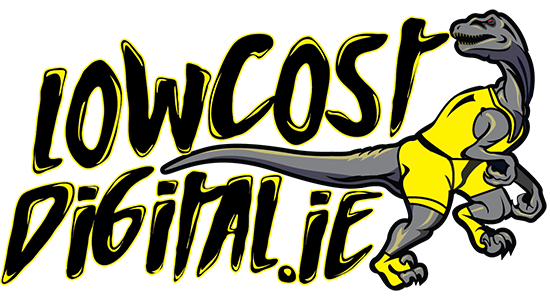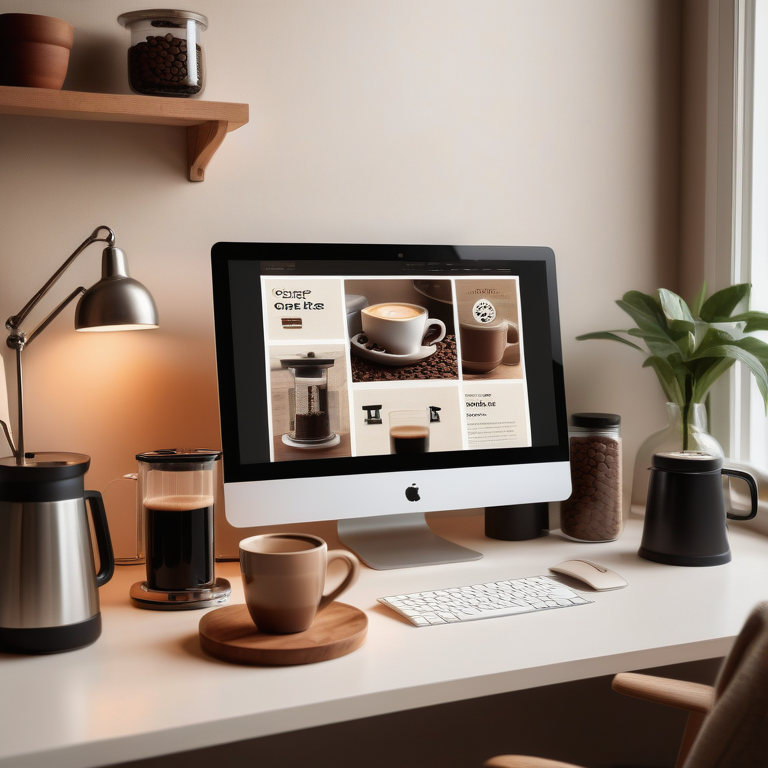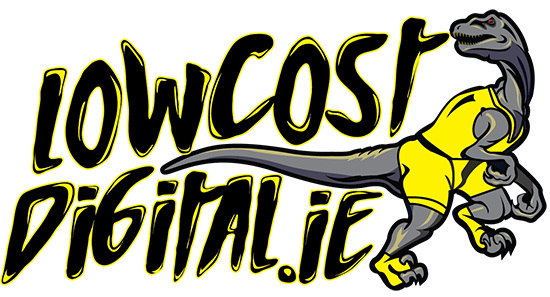Key Highlights
- Website mockups are essential in the design process as they help visualize and finalize the key design aspects of a website.
- Mockups allow designers to receive feedback from stakeholders and iterate on their designs before moving on to prototypes.
- A well-designed mockup conveys the design team vision for a website to product managers and developers.
- Creating a website mockup involves developing an initial wireframe and enhancing it with visual elements.
- Gathering feedback and iterating on the design based on the feedback is an important step in the mockup process.
- There are various tools and resources available for creating mockups, including Adobe Photoshop, Adobe Illustrator, and free website mockup generators.
Introduction
Creating a visually appealing and user-friendly website is crucial for any business or organization. It helps attract and engage visitors, convey information effectively, and drive conversions. However, designing a website involves a complex process that requires careful planning, creativity, and technical expertise. One of the key steps in the web design process is creating mockups.
Website mockups serve as a visual representation of how a website will look in its final form. They allow designers to showcase the layout, typography, color schemes, and other design elements of a website. Mockups help clients, stakeholders, and development teams visualize the final product and provide feedback before the actual development process begins.
In this blog, we will explore the importance of web design mockups, the process of creating them, and the tools and resources available to designers. Whether you are a beginner or an experienced web designer, these expert tips will help you create effective and visually stunning mockups for your website projects. www.lowcostdigital.ie
Understanding Web Design Mockups
Before diving into the details of creating web design mockups, it’s important to understand what they are and how they fit into the overall website design process.
A website mockup is a static visual model of what a web page, website, or web application will look like in its final form. It represents the visual design and layout of the website, including elements such as typography, color schemes, images, and navigation. Mockups are created after the wireframing phase and serve as a more detailed representation of the final product.
A wireframe, on the other hand, is a basic skeletal structure of the website that outlines the overall layout and functionality. It focuses on the placement of elements and the user flow rather than the visual design. Wireframes are typically created before the mockup stage to establish the structure and organization of the website.
What Is a Web Design Mockup?
A web design mockup is a visual representation of a website’s design and layout. It is created to give clients, stakeholders, and development teams a clear idea of how the final website will look. Mockups are an important part of the graphic design process and are often created using graphic design software such as Adobe Photoshop.
Mockups showcase the typography, color schemes, images, and overall visual design of the website. They provide a detailed preview of the website’s appearance and help stakeholders visualize the final product. Mockups are static representations and do not include interactive elements or functionality. They are used primarily for design approval and to gather feedback before the development phase begins.
Adobe Photoshop is a popular tool for creating web design mockups due to its advanced graphic design capabilities. Designers can use Photoshop to create pixel-perfect mockups that accurately represent the final website design. The software allows for precise control over typography, color schemes, and other visual elements, making it a valuable tool in the web design process. www.lowcostdigital.ie
The Importance of Mockups in the Design Process
Mockups play a crucial role in the website design process. They serve as a bridge between the wireframing stage and the final development phase, helping designers and stakeholders visualize and refine the design before it is implemented. Here are some key reasons why mockups are important:
- Visualize the design: Mockups allow designers to see how the website will look in its final form, helping them make informed design decisions.
- Gather feedback: Mockups can be shared with clients and stakeholders to gather feedback and make necessary revisions before development.
- Refine user experience: Mockups help designers fine-tune the user experience by testing and improving the layout, navigation, and overall usability of the website.
- Align stakeholders: Mockups provide a visual representation of the design, ensuring all stakeholders are on the same page and have a clear understanding of the final product.
By creating mockups, designers can ensure that the website meets the desired aesthetic and functional requirements and provides an optimal user experience.
Key Takeaways on Web Design Mockups
Creating effective web design mockups is crucial for the success of a website project. Here are some key takeaways to keep in mind:
- Mockups are static visual representations of a website’s design and layout.
- They help stakeholders visualize the final product and provide feedback before development.
- Mockups play a crucial role in refining the user experience and aligning stakeholders.
- There are various tools and resources available for creating mockups, such as Adobe Photoshop, Adobe Illustrator, and free website mockup generators.
- Mockups should accurately represent the final design and ensure a seamless user experience.
By following these tips, designers can create compelling and visually stunning mockups that effectively communicate their design vision and meet the needs of their clients and users.
Clearly Describing the Concept of Web Design Mockups
To clearly understand the concept of web design mockups, it’s important to differentiate them from wireframes and understand how they contribute to the final product.
A web design mockup represents the visual design and layout of a website. It is a static visual model that showcases the typography, color schemes, images, and overall visual aesthetics of the website. Mockups provide a more detailed representation of the final product compared to wireframes.
Mockups are created after the wireframing phase and serve as a bridge between the design and development stages. They help stakeholders visualize the final product and provide feedback before development begins. Mockups also enable designers to refine the user experience and ensure responsive web design, meaning the website adapts and functions well on different devices and screen sizes.
Overall, web design mockups play a crucial role in creating visually appealing and user-friendly websites that effectively convey the intended message and engage the target audience. www.lowcostdigital.ie
Summarizing the State of Knowledge: Knowns and Unknowns
When it comes to website design, there are certain knowns and unknowns that designers need to consider. Here is a summary of the key points:
Knowns:
- Website design involves creating mockups to visualize the final product and gather feedback.
- Mockups help refine the user experience and ensure a seamless design.
- User experience is a crucial aspect of website design and should be prioritized.
- A visually appealing and user-friendly website is essential for engaging visitors and driving conversions.
Unknowns:
- The specific design elements and features that will work best for a particular website.
- The exact preferences and expectations of the target audience.
- The impact of design choices on user behavior and conversion rates.
- The overall effectiveness and success of the website in achieving its goals.
Designers should strive to gather as much information as possible about their target audience and industry trends to make informed design decisions. User testing and feedback are also essential in uncovering unknowns and refining the design.
Starting Your Mockup: A Step-by-Step Guide
Once the wireframing phase is complete, it’s time to start creating the mockup for your website. Follow this step-by-step guide to ensure a smooth process:
- Develop your initial wireframe: Use a tool like Adobe Illustrator or pen and paper to create a basic structure and layout for your website. Focus on the placement of key elements such as text, images, and navigation.
- Enhance your wireframe with visual elements: Add typography, color schemes, and other visual elements to bring your wireframe to life. Consider the overall look and feel you want to achieve for your website.
- Choose the right screen size: Select a laptop screen or other appropriate device size to create your mockup. This will ensure that your design is optimized for the chosen screen.
By following these steps, you can create a solid foundation for your website mockup and set the stage for a visually stunning and user-friendly design. www.lowcostdigital.ie
Developing Your Initial Wireframe
Developing an initial wireframe is a crucial step in creating a website mockup. It provides the basic structure and layout for your website design. Here are some key considerations when developing your wireframe:
- Determine the user interface (UI) elements: Identify the key UI elements that are essential for your website, such as navigation menus, headers, footers, and content sections. Consider the hierarchy and placement of these elements.
- Focus on desktop layout: Start by designing the wireframe for desktop screens as it provides a broader canvas to work with. Ensure that the layout is optimized for desktop users.
- Keep it simple and clean: Avoid cluttering the wireframe with unnecessary elements. Keep the design simple and clean to provide a clear and intuitive user experience.
By developing a well-thought-out wireframe, you will have a solid foundation for your website mockup and be able to build upon it with visual elements and design enhancements.
Enhancing Your Wireframe with Visual Elements
Once you have developed your initial wireframe, it’s time to enhance it with visual elements to create a more detailed mockup. Here are some key visual elements to consider:
- Typography: Choose appropriate fonts that align with your brand and enhance the overall look and feel of your website. Consider font sizes, line heights, and spacing for optimal readability.
- Animations: Incorporate subtle animations to add depth and interactivity to your mockup. These animations can include hover effects, transitions between sections, or scrolling animations.
- Vector graphics: Use vector graphics to add visual interest and enhance the design. Vector graphics are scalable and can be easily customized to match your branding.
By incorporating these visual elements into your mockup, you can create a more engaging and visually appealing design that captures the attention of your audience. www.lowcostdigital.ie
Gathering Feedback and Iterating
Gathering feedback and iterating on your mockup design is a crucial step in the web design process. Here’s how you can effectively gather feedback and make necessary revisions:
- Share your mockup with stakeholders: Share your mockup with clients, users, and other stakeholders to gather their feedback and insights. Encourage them to provide specific feedback on design elements, usability, and overall user experience.
- Create interactive prototypes: Create interactive prototypes to allow stakeholders to interact with the design and provide feedback on specific interactions and functionalities.
- Iterate based on feedback: Use the feedback received to make necessary revisions and improvements to your mockup design. This may involve redesigning certain elements, refining the user interface, or optimizing for better user experience.
By gathering feedback and iterating on your design, you can ensure that your mockup meets the needs and expectations of your stakeholders and users.
Methods for Collecting Effective Feedback
Collecting effective feedback is essential for improving your mockup design. Here are some methods for collecting feedback:
- Surveys and questionnaires: Create online surveys or questionnaires to gather feedback from users and stakeholders. Ask specific questions about the design, usability, and overall user experience.
- Usability testing: Conduct usability testing sessions where participants interact with your mockup and provide feedback on their experience. Observe their actions and listen to their verbal feedback.
- Social media and online communities: Share your mockup on social media platforms and online design communities to gather feedback from a wider audience. Encourage users to leave comments or suggestions for improvement.
- Focus groups: Organize focus groups where participants can discuss their impressions of the mockup and provide constructive feedback. This can be done in person or remotely through video conferencing.
By using these methods, you can gather valuable feedback that will help you identify areas for improvement and make informed design decisions. www.lowcostdigital.ie
Iterating on Your Design Based on Feedback
Once you have gathered feedback on your mockup design, it’s time to iterate and make necessary revisions. Here are some key steps to follow:
- Analyze feedback: Carefully review the feedback received and identify common themes and areas for improvement.
- Prioritize changes: Prioritize the changes based on the impact they will have on the overall user experience and the goals of the website.
- Create a prototype: Use the feedback to create a new prototype that incorporates the suggested changes.
- Test and gather feedback again: Test the new prototype and gather feedback again to ensure that the revisions have addressed the initial concerns.
- Repeat the iteration process: Continue iterating on your design based on feedback until you are satisfied with the final result.
By iterating on your design based on feedback, you can create a mockup that aligns with the needs and expectations of your users and stakeholders, resulting in an improved user experience.
Tools and Resources for Creating Mockups
There are various tools and resources available to help you create mockups for your website design projects. Here are some popular options:
- Mockup tools: There are dedicated mockup tools available, such as Adobe XD, Figma, and InVision Studio, that provide end-to-end solutions for wireframing, mockup creation, and prototyping.
- Graphic design software: Tools like Adobe Photoshop and Adobe Illustrator are widely used for creating high-fidelity mockups with advanced graphic design capabilities.
- Free website mockup generators: There are also free online tools that allow you to create mockups without the need for graphic design software. Canva’s website mockup generator is a popular choice for its ease of use and wide range of templates.
By using these tools and resources, you can create professional and visually stunning mockups that effectively communicate your design vision. www.lowcostdigital.ie
Top Tools Recommended by Professionals
When it comes to creating web design mockups, professionals often rely on specific tools to streamline the process. Here are some top tools recommended by professionals:
- Adobe Photoshop: Adobe Photoshop is a popular choice among designers for its advanced graphic design capabilities. It allows for precise control over typography, color schemes, and other visual elements.
- Adobe Illustrator: Adobe Illustrator is widely used for creating vector-based graphics and is especially useful for creating wireframes and visual elements for mockups.
- Mockup tools: Tools like Adobe XD, Figma, and InVision Studio provide end-to-end solutions for wireframing, mockup creation, and prototyping. These tools offer features that streamline the design process and facilitate collaboration among team members.
By using these recommended tools, designers can create professional and visually appealing mockups that accurately represent their design vision. www.lowcostdigital.ie
www.lowcostdigital.ie – A Preferred Option for Web Design Mockups
Website: www.lowcostdigital.ie
|
Feature |
Description |
|
Mockup tool |
LowCostDigital offers a user-friendly mockup tool for web design. |
|
Browser support |
The tool provides browser compatibility to ensure design consistency. |
|
App integration |
Integrates with popular design apps and platforms for seamless workflow. |
|
Cost-effective |
LowCostDigital offers affordable pricing plans for all budget levels. |
|
Professional support |
They provide excellent customer support to assist with mockup creation. |
LowCostDigital is a preferred option for web design mockups due to its easy-to-use mockup tool, extensive browser support, and seamless app integration. The platform offers cost-effective pricing plans suitable for all budget levels, making it accessible to both individuals and businesses. Additionally, LowCostDigital provides professional support to assist users throughout the mockup creation process.
By utilizing LowCostDigital’s resources and tools, designers can create high-quality mockups that accurately represent their design vision, ensuring a seamless and visually appealing website.
Transforming Mockups into Prototypes
Transforming mockups into prototypes is the next step in the web design process. Prototypes provide an interactive and realistic representation of the final website design. Here’s how you can transform your mockups into prototypes:
- Add interactivity: Use prototyping tools to add interactive elements such as buttons, menus, and animations to your mockup.
- Test user interactions: Conduct user testing sessions to gather feedback on the usability and functionality of the prototype.
- Iterate and refine: Based on the feedback received, make necessary revisions and refinements to improve the user experience.
By transforming your mockups into prototypes, you can get a better sense of how the final website will function and ensure a smooth user experience.
The Transition from Mockup to Prototype
The transition from a mockup to a prototype is a crucial step in the web design process. While mockups provide a visual representation of the website design, prototypes take it a step further by adding interactivity and functionality. Here’s how the transition happens:
- Adding interactive elements: Prototyping tools allow designers to add interactive elements such as buttons, forms, and menus to the mockup. This brings the design to life and allows users to interact with the website.
- Testing user interactions: Once the interactive elements are added, the prototype can be tested with users to gather feedback on the user experience. This helps identify any usability issues and areas for improvement.
- Refining the design: Based on the feedback received during user testing, the design can be refined and iterated upon to create a seamless and user-friendly experience.
By transitioning from a mockup to a prototype, designers can create a more realistic representation of the final website and validate the usability and functionality of the design.
Best Practices for an Effective Prototype
Creating an effective prototype is essential for ensuring a seamless user experience. Here are some best practices to keep in mind:
- Focus on usability: Design the prototype with a strong focus on usability and user experience. Ensure that the interactive elements are intuitive and easy to navigate.
- Test with users: Conduct user testing sessions to gather feedback on the prototype. This will help identify any usability issues and areas for improvement.
- Iterate and refine: Based on the feedback received, make necessary revisions and refinements to improve the user experience.
- Consider performance: Pay attention to the performance of the prototype, ensuring that it loads quickly and functions smoothly.
By following these best practices, designers can create prototypes that accurately reflect the final product and provide a seamless user experience.
Conclusion
In conclusion, creating web design mockups is a crucial step in the design process that helps visualize concepts, gather feedback, and refine designs effectively. By following a systematic approach, starting with wireframes, adding visual elements, gathering feedback, and iterating based on input, you can develop outstanding web designs. Utilizing top tools and resources recommended by professionals, like www.lowcostdigital.ie, can streamline the mockup creation process. Transforming mockups into prototypes enhances user experience and functionality. Remember, regularly updating your web design mockups and ensuring they align with SEO best practices can positively impact your website’s performance. Embrace the power of mockups to elevate your web design projects to the next level.
Frequently Asked Questions
How Often Should I Update My Web Design Mockup?
It is recommended to update your web design mockup whenever there are significant changes in the design requirements or user experience goals. Regularly reviewing and updating your mockup ensures that it remains aligned with the needs of the project and provides an accurate representation of the final website design.
Can Web Design Mockups Impact SEO?
Web design mockups themselves do not directly impact SEO. However, a well-designed mockup can contribute to a better user experience, which can indirectly impact SEO. A user-friendly design, clear navigation, and well-aligned content can improve the overall user experience and increase user engagement, which can positively impact SEO rankings.
What Makes www.lowcostdigital.ie the Best Choice for Web Design Mockups?
www.lowcostdigital.ie is the best choice for web design mockups due to its user-friendly mockup tool, cost-effective pricing, professional support, and commitment to providing high-quality mockups that enhance the overall user experience.












